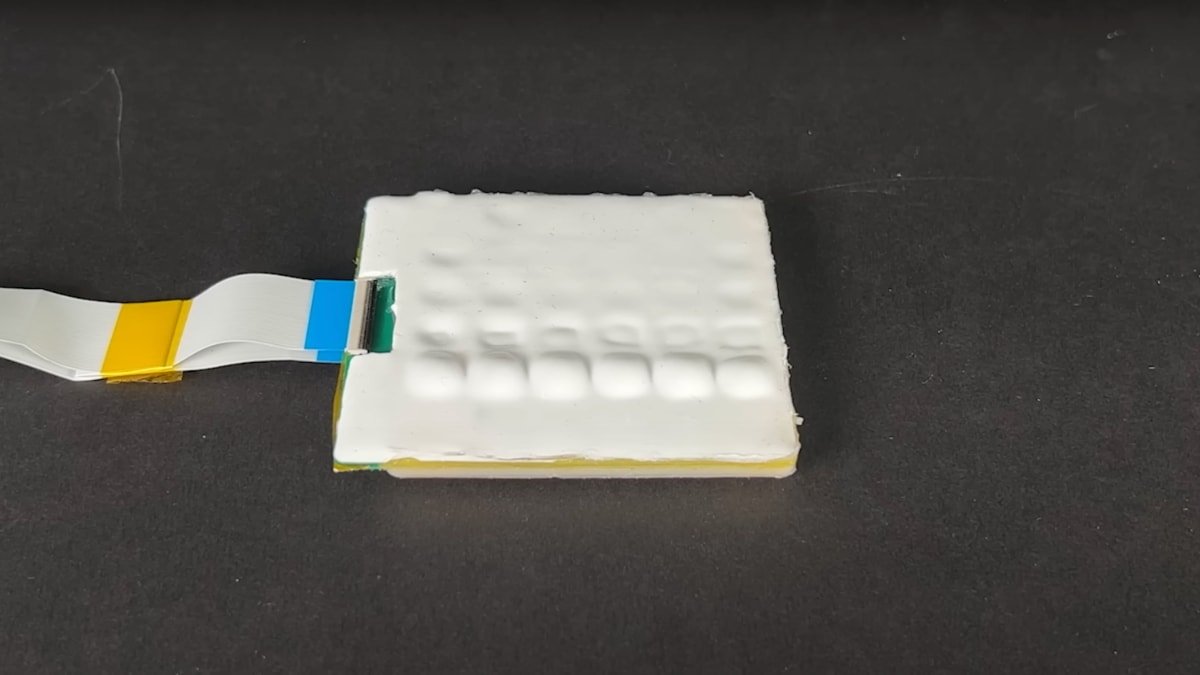Apple has been working on technologies to elevate glass on demand for keyboards and notifications for a long time, and newly published research from Carnegie Mellon may have a solution.
The technology could enable smartphones like the iPhone to physically deform a display for various elements, such as notifications. For example, such a display could present a raised bump to inform users of notifications more subtly, such as when the smartphone is in silent mode.
The Future Interfaces Group at Carnegie Mellon University is behind the research, according to TechCrunch. They describe the technology as "embedded electroosmotic pumps for scalable shape displays."
The primary achievement they're claiming is the successful integration of the hydraulic haptic system into a slim panel concealed behind an OLED display, like the ones utilized in modern smartphones. They show their work in a research paper and offer a video demonstration.
The group says their electro-osmotic pumps can be as small as 2mm in diameter, with each pump being individually controllable and supporting fast update rates.
Apple has been working on technology like this for a long time
The technology can go beyond mere notifications, however. For example, Apple was granted a patent in 2019 titled, "Touch surface for simulating materials," in which the company proposes methods to modify a surface to produce a range of sensations that resemble those of diverse textures.
According to the patent, actuators, temperature control devices, and a central control unit are recommended for generating both types of feedback over a designated section of a touch surface. Regarding the actuators, the control unit will activate them to induce vibrations on the display, resulting in a tactile sensation of texture.
In the past, Apple has explored other ways to enhance the tactile experience for its users, as evidenced by the March 2017 patent titled "User Interface having changeable topography," which describes a display that can alter its shape to include raised sections. For instance, this could involve including elevated keys on a keyboard or calculator.
Apple has also done research into using haptic technology for keyboards. In 2022 it was granted a patent for a "keyless keyboard" that would use solid-state haptics technology that would replace physical keyboard kkeys with a glass display utilizing touch-sensing systems.
The patent describes a top layer of glass that features two force-sensing systems for distinct "input regions," as well as a touch-sensing system for detecting the position of the user's fingers. Haptic feedback is delivered through one or more actuators to provide a response for each keystroke.
 Andrew Orr
Andrew Orr

-m.jpg)






 Marko Zivkovic
Marko Zivkovic
 Mike Wuerthele
Mike Wuerthele
 Christine McKee
Christine McKee
 Amber Neely
Amber Neely
 Wesley Hilliard
Wesley Hilliard

 William Gallagher
William Gallagher










12 Comments
I’ve never seen this discussed here. But I wonder why Apple has been seemingly focused on glass.
It’s general properties, availability, easily recyclable, it’s certainly better than plastics for various reasons.
I suspect Apple would want to minimize the number of moving parts in their devices, but this sounds like it could be great in all kinds of applications for blind people.
You won't see this show up in any imminent iPhone for sure. For one, you won't see Gorilla glass - the super tough glass used on the iPhone - deforming in the ways described here. But I could see it on surfaces that aren't subject to as much accidental violence as the iPhone screen - maybe an all-glass MacBook or an all-solid Magic Keyboard or Mouse.
Apple is not going to make a device with creepy looking organic blisters for a keyboard. I'm sure it's great for accessibility but it looks like pure sci-fi horror.
This sounds like a cool technology that another company might well build into a product, but I highly doubt it'll ever be in anything Apple make.